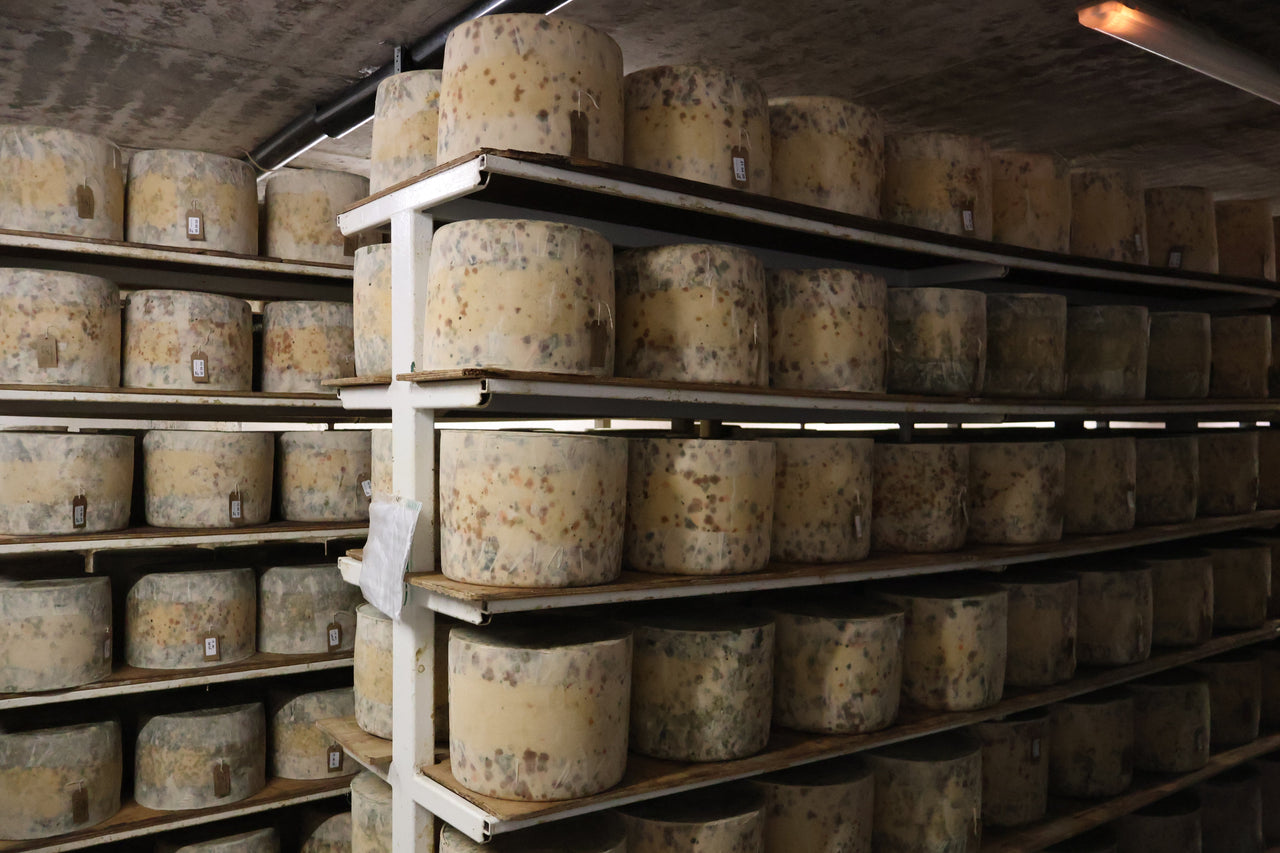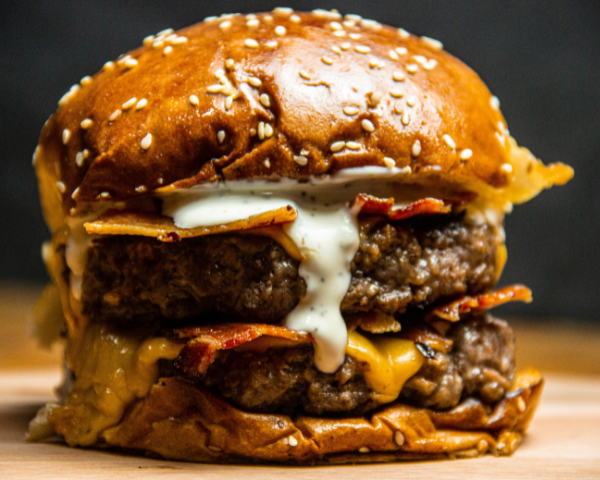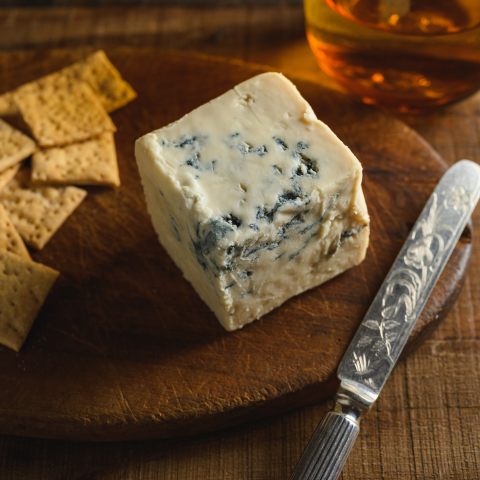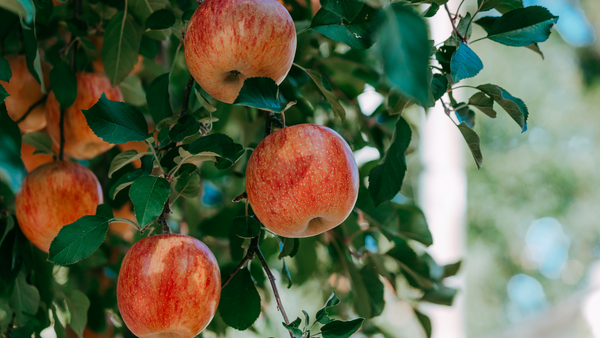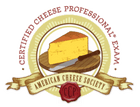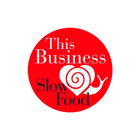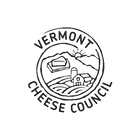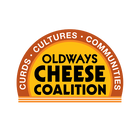Hi! My name is Emily, and I've been working at Fairfield Cheese Company as a cheesemonger for about a year. While my family was planning a trip to the Scottish Highlands this past May, Laura encouraged me to check out Sgriob-ruadh Farm (pronounced "skrib-rooah"), a small family-owned cheesemaking operation on the Northern coast of the remote Isle of Mull. The journey from the mainland involved two ferries and about fifty miles of white-knuckle driving (for the uninitiated American, at least) on narrow, winding one-track roads, where roadside pull-offs allowed oncoming locals to pass with a friendly hand wave. Once there, we were warmly welcomed and given a full tour by a cheesemaker named Troy. We were also treated to a tasting of some of their products, including their signature Isle of Mull Cheddar. This visit turned out to be the highlight of the entire trip, and I would love to share a little bit of what I learned with you!
The view of the farm from the parking lot
FARM HISTORY
The Reade family, originally from Somerset, England, purchased the land in 1978. The existing farmhouse was then little more than a stone ruin. The Reades set to work making the farm livable for their family and animals, and within two years, they had moved a herd of ten dairy cows to the island and began supplying milk to the local market.
The state of the farmhouse when the Reades purchased it in 1978
As a way to utilize leftover milk, the Reade family began experimenting with cheesemaking. Before long, demand for their product began to grow, and by 2000, they had transitioned their entire operation to cheese production. Today, Sgiob-ruadh produces farmstead cheddar and blue cheese, along with pork, and whey spirits (a recent addition to their operation, driven by their commitment to a zero-waste model and made possible by some seriously innovative microbiology research). Throughout all of their ventures, the Reade family maintains a strong set of values that highlight sustainability and ethical animal husbandry.
ANIMAL HUSBANDRY
Over the years, the farm's original herd of ten has grown to more than five hundred. It is a closed herd; all the cattle are bred on the farm, allowing the herd managers to maintain the genetic lineage of the cows. This limits disease and hereditary health complications, resulting in healthier cows and high-quality milk.
The cows are milked twice daily, and line themselves up at the pasture gate just before milking time.
To produce milk, cows need to have recently given birth to a calf. But just like in humans, pregnancy and birthing are extremely taxing for the mother. To help mitigate this, the farm cycles the herd, milking only one to two hundred animals at a time, while the rest are allowed ample time to recuperate before their subsequent pregnancy. Additionally, each cow wears a collar that syncs with a computer system when they are milked. This system collects data about each cow’s milk production, allowing the farm to closely monitor both the quality of the product and the well-being of the animal.
One of this season’s calves!
Everyone at Sgiob-ruadh Farm displays a deep respect for their animals and an appreciation for the immense contribution they make toward the success of the business. In return, they treat the animals with dignity and compassion. Animals on Sgriob-Ruadh Farm are not culled unless necessary for injury or illness; after cows reach about eight years of age, they are permanently retired and allowed to spend the rest of their days grazing the hills of Mull, receiving quality care until their natural end. If a cow gives birth to twins, they are immediately and permanently retired from the breeding and milking cycle due to the high-risk nature of their pregnancy and birth.
SUSTAINABILITY
While the key to the Reades’ success may lie mainly in their meticulous care for the herd, not enough can be said for their commitment to sustainability. The farm proudly wears the “zero waste” badge, making use of every possible bit of would-be byproduct. In addition to more common eco-friendly fixtures (solar, wind, etc), the farm uses a proprietary heat recycling system to capture body heat from their cows’ milk. The system, designed and built by one of the Reade sons, transfers the heat from the fresh milk into piping which warms a large body of water (in this case, an on-site swimming pool opened by the Reades for community swimming lessons!). The pool stores the heat, which is then piped back to the production floor for use in the cheesemaking process.
The team at the farm has created a self-sustaining 'circular economy' on Sgriob-Ruadh Farm.
They also use their whey, typically a byproduct discarded when separated from milk solids during the cheesemaking process, both as feed for their pigs and in the production of whey spirits. The farm’s sustainability ethos even extends to the other major byproduct on a dairy farm: cow poop. The herd’s waste is collected and turned into fertilizer, which helps grow the grass in the pastures (up to an inch a day, according to our tour guide!). With all of these systems and more in play, the farm produces 100% of its own heat and electricity, and often supplies surplus energy back to Mull’s power grid.
Surplus whey is fed to pigs.
DISTILLERY
At Sgriob-Ruadh Farm, the cheesemaking process produces around 16,000 liters of whey per week. Finding a way to reuse such a high-volume waste product was a challenge, and even after incorporating what they could into their pigs’ diet, the farm was still left with thousands of gallons of whey a week to repurpose. To address this, the farm brought in a microbiologist to develop a strain of yeast capable of digesting the lactose in whey, just as typical yeast ferments plant sugars. Add to that a new state-of-the-art distillery, and the farm now turns all of its surplus whey into spirits. The spirits are aged in whiskey barrels to create “Whey-ski,” infused with farm-grown botanicals to produce a gin-inspired liquor called “Coo j’n,” or left as-is for a whey vodka named “Sgriob-Ruadh” after the farm.
Our tour guide, Troy, showed us the farm’s whey distiller.
CHEESE
All of the cheeses from Sgriob-Ruadh Farm are farmstead cheeses, which means that the cheeses are made and aged on the same farm where the cows live and graze. They offer a peppery blue called “Hebridean Blue” in limited quantities, but their star is the Isle of Mull Cheddar. The flavor is savory, fruity, and sometimes yeasty and boozy, often credited to the fermented barley mash that supplements the herd’s diet (the byproduct of a local distillery’s whisky production).
In the cheesemaking process, the fresh curds are drained, salted, and pressed into sixty-pound wheels of cheese. Shortly after production, these wheels are wrapped in cloth to protect the rind and structure as the cheeses are handled throughout the aging process. The wrapped wheels are then moved to a cheese cave where they are meticulously climate-controlled and tended to for the next twelve to eighteen months. This includes flipping and rotating the cheese weekly– a physically demanding process necessary to maintain the wheels’ shape and achieve an even distribution of water and salts throughout the interior. As the cheese is aged, water slowly evaporates from the curds. The salts and flavors condense and develop under the rind, turning from bland, squeaky curds to rich, salty crumbles. After six months, the cheeses are dipped in lard to create a seal around the wheel, halting evaporation. From there, the cheese is aged and periodically turned for another six to twelve months. It is easy to overlook the diligent and skilled labor that goes into the production of artisan cheeses, but the work and wait are well worth it.
Wheels of Isle of Mull Cheddar near the end of the aging process.
Isle of Mull’s Sgriob-Ruadh Farm represents everything we at Fairfield Greenwich Cheese Co. aim to support. The Reade family and staff demonstrate their creativity, passion, and commitment to sustainable, regenerative agriculture in everything they do. Their dedication to giving back to the surrounding community is truly inspiring. And of course, their cheeses are nothing short of exceptional.
The farm is open for public tours year-round; if you ever find yourself in Scotland, I encourage you to schedule one! You can find more information on their website,

